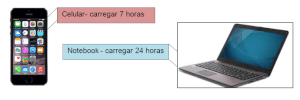Mathematics Assessment, aimed at students in the 3rd year of Elementary School I, with math problem activities.
This math test is available for download in an editable Word template, ready to print in PDF and also the completed activity.
Download this activity from:
SCHOOL: DATE:
PROF: CLASS:
NAME:
1) Review the image below:

BRL 17.00
To buy a box of chocolates I need:
(A) Two ten reais and one five reais bill.
(B) One ten reais bill and two five reais bills
(C) One ten reais bill and two two reais bills,
(D) One ten reais note, one two and one five reais note.
2)Did you know?
Some substances that are part of the chemical composition of batteries are potentially dangerous and can affect your health. Specifically, lead, cadmium and
Mercury. http://www.mundovestibular.com.br/articles/1072/1/PILHAS-E-BATERIAS/Paacutegina1.html
A team of students from Escola Tiradentes, engaged in environmental issues, collected 2,864 batteries for recycling in three months, sending this material to specific deposits. In the thousand 2 864, the digit 8 occupies the order of:
(A)simple units.
(B) units of thousands.
(C) hundreds.
(D) tens.
3) The society where Escola Tiradentes is located was very proud of the students' initiative in collecting used batteries. Maria made the following comment:
“These children started to develop this work when they were 10 years old, so when they are 20 years old they will have helped a lot to preserve the environment.”
Daniel is 12 years old. Daniel's age, 20 years from now, will be:
(A)32 years old.
(B)22 years old.
(C)42 years old.
(D) 52 years old.
4) Observe the manufacturer's recommendations regarding the number of hours for the first charge of each device's battery.

Cellphone- charge 7 hours
Notebook - charge 24 hours
Adding the hours of battery charge of each device, we will have together:
(A) 31 hours.
(B) 35 hours.
(C)40 hours.
(D)38 hours.
5) Recently, the cell phone has become the device most used by children and teenagers to access the internet. And the biggest motivation for using the network is to enter social networks to seek information for jobs school and personal interests such as listening to music, playing games, watching videos, among others.
The number of young people who use their cell phone every day corresponds to the number that is missing in the sequence below.
60….70….____…90…100
The number of young people who use the cell phone every day is:
(A)40
(B)80
(C)30
(D)20
Per Rosiane Fernandes Silva
At answers are in the link above the header.
 report this ad
report this ad